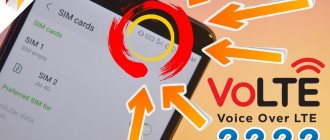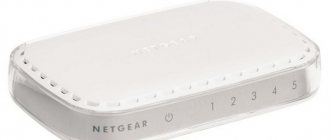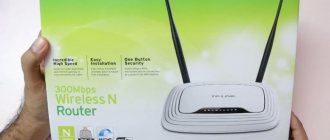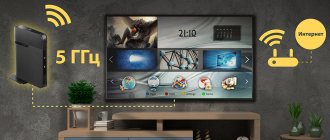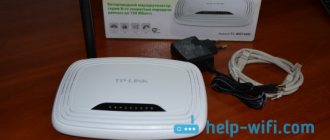In descriptions of the characteristics of smartphones and tablets, many have probably come across the abbreviations 4G LTE more than once. Almost every second gadget supports fourth generation networks. The tariffs of the largest cellular operators are universally switching to support the Internet at increased speed. It’s not surprising: we live in a world of social networks and 24/7 online communication, constantly surrounding ourselves with streams of information. If a few years ago we were satisfied with the speed of the third generation network (3G), now we vitally need high-speed data transfer. This is provided by devices equipped with a 4G LTE module. Let's understand the terminology: what these mysterious letters mean, how 4G differs from LTE, and whether inexpensive smartphones with 4G can be found on sale.
frequency range
The mobile network operates in a certain frequency range. 2G uses 4 frequency bands: 850/900/1800/1900 MHz. In addition to the listed frequencies, 3G UMTS also uses 1700/2100/2200 MHz, and 3G CDMA uses 800 and 1900 MHz. In 4G, the low end starts at 450 MHz and ends at 5 GHz. As a result, up to 70 bands were formed, which operate in a certain frequency range.
The frequency in each band determines the coverage and quality of communication. For example, the coverage radius of band 31 at 450 MHz is up to 19.7 km, band 20 at 800 MHz is up to 13.4 km, the most used band 3 at 1800 MHz in the world is up to 6.8 km, and band 7 at 2600 MHz – up to 3.2 km. Moreover, the lower the frequency, the more difficult it is to serve a large number of subscribers. Therefore, in places with large concentrations of users, it is rational to use base stations with a frequency of 2600 MHz.
Since the population density in each country is different, the frequency range in some countries is different. For example, in Russia bands 3, 7 and 20 are predominantly used; in Europe bands 1, 3, 7, 8; in the USA, bands are 2, 4, 5, 13, 17, 25. For a more detailed list of countries, see here.
What happens if the smartphone does not support certain bands? The 4G network will not work or will work in a limited mode on 1-2 bands instead of 3 or 5. Therefore, smartphones that are produced for use in a specific country - Japan, China, USA, etc., are not very preferable for use in European countries. Over the past few years, mobile electronics manufacturers have been focusing on working in several regions, which contributes to the release of global versions of smartphones. The modems of such devices combine up to 20 bands, which guarantees 4G operation in most countries around the world.
LTE support by operators and phone
With the increased popularity of 4G LTE, it has become clear to mobile operators that they need to upgrade their networks. Gradually, large towers began to be installed only in large cities, but every year the coverage area of the fourth generation network is expanding. The Big Four Russian operators also joined the 4G promotion, adapting their tariff plans to new conditions.
Currently, the leader in supporting LTE frequencies is Megafon - their service extends to more than 30 regions across the country . Moreover, the company is actively placing base stations even in populated areas with a small population. High Internet speed and a huge coverage area are the operator’s undoubted advantages. True, you have to pay for quality, since Megafon’s tariff offers are expensive.
On a note! In addition, high-quality 4G coverage is supported by MTS, Beeline, Tele2 and Yota. Of these, Tele2 has the fewest base stations, so network interruptions often occur in the 4G coverage area. But the cost of the service is significantly lower than competitors.
Before connecting this format, first of all, you need to find out whether your region belongs to the coverage area of 4 generation networks. If you can get 4G without any problems in the area where you live, we recommend choosing the most optimal tariff plan. Typically, package plans with a limited amount of traffic are most suitable. Regular use of high-speed Internet will require many gigabytes, or even unlimited ones. Now each mobile operator has separate tariffs for smartphones, tablets and standard PCs, so choosing the right one will not be difficult.
How to find out if a smartphone supports 4G LTE? There are several tips for this.
- Study your phone's documentation: it should indicate the data transfer standards for a specific device.
- Go to the gadget settings and mobile connection settings. In the Network Type (or Network Mode) section, you can find out which networks are supported on your phone.
- If you don’t have documentation at hand, information about the device can be easily found on the official website. Find your smartphone model and carefully study the communication characteristics.
What is the difference
At first glance, 4G is no different from LTE. These technologies emerged almost simultaneously and are similar in operating principle (wireless communications) and main purpose (high-speed data transfer). Both standards provide a packet data transfer protocol. But, as stated above, LTE is included in the very concept of 4G and is rather a subtype of it. Here are a few more differences for those who don't want to get confused by internet terms.
- The stated data transfer speed in 4G is higher.
- High throughput values.
- The maximum data reception speed in LTE mode is approximately 30Mb/s, in the current fourth generation – 50Mb/s.
- 4G is compatible with 3G, LTE is not. So, if you leave LTE support zones and move to a 3G zone, your device will experience a network failure.
What is 4G
The development of the 3G network once allowed mobile device users to literally “fly” on the Internet. Of course, there is Wi-Fi for these purposes, but it is not possible to find a free access point everywhere. However, progress does not stand still, and old standards are being replaced by new, more advanced ones. Now the future is 4G, or fourth generation - a fourth generation network. With its help, data is transferred at speeds of up to 1 Gb/s (for stationary subscribers) and up to 100 Mb/s for clients with high mobility. A “mobile” subscriber is one who accesses the Internet from his smartphone while away from home, often in transport (for example, in a car or train). For the first time, the basic standards of a new generation network were approved in 2008, in Switzerland, at a conference on the development of wireless technologies. In essence, 4G is wireless broadband that simultaneously transmits voice and information at high speeds. Moreover, the signal is supplied tens of times faster than in the 3G network. 4G unites a whole set of new generation networks, this includes both the LTE mode and WiMAX technology.
About 10 years ago, 4G support was an unattainable peak for most operators. Today, telecom companies are actively improving their networks to the fourth generation standard, equipping more and more radio towers in cities. The only thing that is required from the subscriber is to have a device that supports 4G.
Budget smartphones with LTE 4G support: top 5
Now you can find very inexpensive smartphones that support 4G on sale. Gadgets from Chinese corporations such as Honor, Meizu, and Xiaomi are in particular demand. At a relatively low cost, they have rich functionality and demonstrate high-quality, stable operation. However, the world's oldest brands also have several budget phones with 4G support.
Vivo Y81
This is the cheapest 4G smartphone in our top. The cost of the model is 9,990 rubles. For this amount you will get a well-built gadget with a huge 6.22-inch screen and LTE support. The display is very elongated, as the aspect ratio is 19:9. The device works stably and quite quickly, despite the nondescript MediaTek Helio P22 processor on board. The OS installed by the manufacturer here is Android 8.1 Oreo.
3 GB of RAM and 32 GB of internal memory are responsible for the performance here. This will be enough for the everyday work tasks of an undemanding user. Let's highlight the decent performance of the 13 MP rear camera and the 5 MP front camera. The quality of images in good lighting is pleasing, but when shooting at night, the detail of the images drops significantly.
On a note! Vivo Y81 has a feature called AI Face Beauty. With its help, unlocking is carried out here - unexpectedly for a budget smartphone.
The battery of Vivo Y81 has a capacity of 3260 mAh. This volume is enough for a day of moderately intensive use.
- high speed data transfer;
- stable operation of 4G LTE;
- large display;
- high-quality color rendering;
- face recognition;
- ergonomics of the device;
- a lot of memory.
- inconvenient settings menu;
- no NFC;
- mediocre cameras.
Vivo Y81 on Yandex Market
Samsung Galaxy J4 (2018) 3/32GB
Another cheap smartphone with 4G, but this time from the famous brand Samsung. Average cost – 10,800 rubles. The model has a high-quality 5.5-inch display, a very bright and contrasting SuperAMOLED matrix and a classic 16:9 screen aspect ratio. The device has two slots for SIM cards and a separate tray for a microSD card, so the user does not have to rack his brain over whether to install a SIM or expand the internal memory. The smartphone perfectly supports 4G LTE standards, Bluetooth, and Wi-Fi communication interfaces. Thanks to the 3000 mAh battery capacity, the battery lasts for an average of 2 full days (with moderate use). The battery is removable.
There is also a fairly high-quality 13 MP main camera with LED autoflash and a 5 MP front camera. And while pictures from the rear camera will pleasantly surprise you with their richness and detail, selfies turn out worse: blurry and faded.
The budget nature of this gadget gives away the design without any interesting finds, moreover, in a plastic case. At the bottom there is a mechanical central button - to some this will seem like a relic of the past. The budget quad-core Exynos 7 7570 processor with a frequency of 1.4 GHz, 3 GB of RAM and 32 GB of internal memory is responsible for the stable operation of the device.
- classic design;
- good quality of pictures;
- The battery holds a charge for a long time;
- amount of RAM;
- latest version of Android;
- separate slot for memory card.
- no fingerprint scanner;
- The plastic body looks cheap.
Samsung Galaxy J4 (2018) 3/32GB on Yandex Market
Honor 7C 32GB
Honor 7C belongs to the category of budget devices with support for most frequency ranges. Thanks to the built-in LTE module, this 4G smartphone provides high data transfer speeds of up to 350 Mb/s. The device operates without problems in the networks of major operators, showing fairly stable Internet operation. The device is made of plastic; the screen is protected by 2.5D glass and a thin oleophobic coating. The smartphone is controlled using a 5.7-inch screen with a resolution of 720×1440 pixels and an aspect ratio of 18:9. Despite its unusual dimensions, the device is comfortable to use and fits easily in your hand.
The hardware used here is the average performance Qualcomm Snapdragon 430 MSM8937 processor. A good combination of memory guarantees fast operation without interruptions or freezes: 3 GB of RAM and 32 GB of internal memory. There is also support for microSD cards up to 256 GB, and even with a separate slot. You can highlight a high-quality dual rear camera (13+2 MP) and a front selfie camera with an 8 MP sensor. The cost of this smartphone with LTE from the Honor brand is 10,990 rubles.
- performance;
- high quality processor and graphics accelerator;
- elegant design;
- support LTE-A Cat. 4;
- rich color rendering;
- high quality of both cameras.
- short battery life;
- body thickness;
- The face recognition option is unstable.
Honor 7C 32GB on Yandex Market
Xiaomi Redmi Note 5 4/64GB
Among the many smartphones with 4G support, Xiaomi Redmi Note 5 stands out. Today it is one of the bestsellers of the famous Chinese corporation. The current average price is RUB 14,390. This is a model with a huge bright screen (5.99-inch diagonal) and excellent autonomy thanks to a capacious battery. The gadget is equipped with a 4000 mAh battery. Xiaomi Redmi Note 5 is designed for those who spend a lot of time on the Internet, intensively use messengers and social networks, and play medium-power games.
Despite the fact that the model does not have an all-metal, but a composite, partly plastic body, the assembly is of high quality. There is support for fourth generation networks, the data transfer speed is decent. The phone does not slow down when performing all its basic tasks.
Among the technical characteristics, we highlight the 8-core Qualcomm Snapdragon 636 processor with an excellent Adreno 509 graphics accelerator. There is as much as 4 GB of RAM, combined with 64 GB of built-in flash memory. Memory cards are supported, although the tray is hybrid (you will have to sacrifice a second SIM card). There is a high-quality dual 12+5 MP main camera, a powerful 13 MP front camera and the latest Android OS version 8.1 with the original MIUI 9.5 shell.
- juicy and bright display;
- sound quality;
- powerful battery;
- support of all wireless frequencies;
- face recognition;
- system updates arrive “over the air”;
- great cameras.
- considerable dimensions;
- absence
Xiaomi Redmi Note 5 4/64GB on Yandex Market
Samsung Galaxy A6 32GB
Another device from Samsung is the 4G smartphone Samsung Galaxy A6. This is one of the most affordable gadgets from well-known manufacturers with support for current frequency ranges. Price – from 13,620 rubles. Equipped with a 5.6-inch screen, AMOLED matrix, non-standard aspect ratio 18:9. Despite the huge screen, the gadget is comfortable to hold in your hand and carry in your pocket - the weight is light, the thickness of the case is small, and the width is also small (thanks to the elongated display). The case is metal, there are several classic color options.
The device operates on a fast, albeit budget, Exynos 7870 processor with a frequency of 1.6 GHz. The user is presented with 3 GB of RAM and 32 GB of available internal memory. The filling here is the usual Android 8.0. Works smoothly, without freezing. In addition, there are two cameras on board – a 16 MP rear camera with autofocus and a 5 MP front camera. Both cameras demonstrate good detail, rich color reproduction and have many shooting modes.
The battery capacity is 3000 mAh. Without additional charging, the gadget will easily last a day of intensive use and up to 3 days with minimal use. Excellent autonomy here is guaranteed by optimization of the operating system. Today this is the best smartphone for the Internet of fourth generation standards.
- sleek design;
- display quality;
- performance;
- good ergonomics;
- high-quality assembly;
- almost a flagship camera.
- old type of micro USB connector;
- does not recognize faces well.
Samsung Galaxy A6 32GB on Yandex Market
